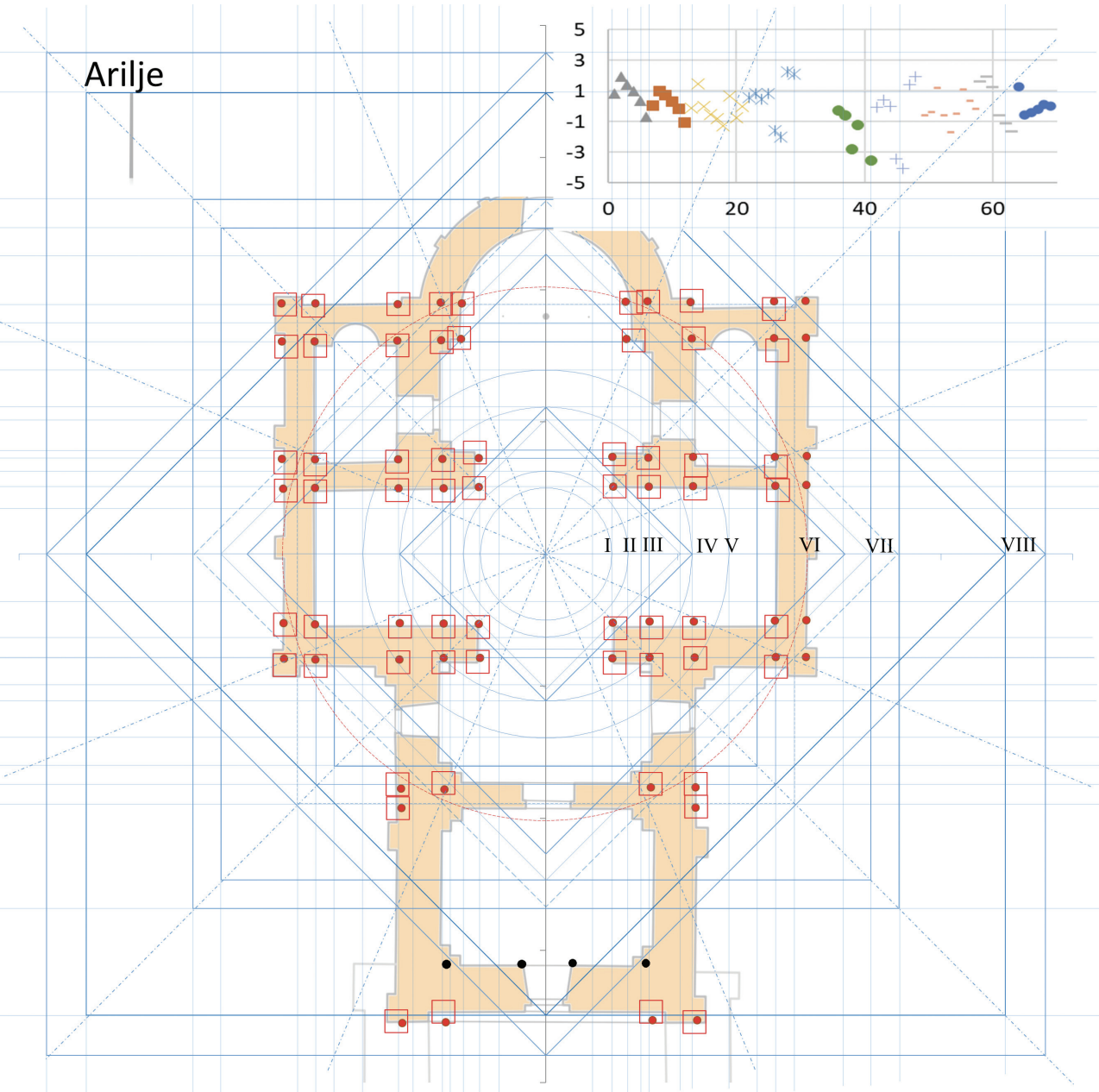
Magdalena Dragović, Aleksandar Čučaković, Demetrius Savvides and Jelena
Bogdanović published “The Two Geometric Concepts Applied on the Architectural
Design of Medieval Churches in the Balkans” in SmartArt – Art and Science Applied.
Experience and Vision (Belgrade: Faculty of Applied Arts and Serbian Academy of Arts
and Sciences, 2022), 372-392.
This paper presents a combined application of the two geometric concepts to analyze architectural layouts of selected medieval churches in the Balkans. One concept is a geometric construction, known as Štambuk’s canon, which is here supplemented by triangulation. Its application has been already attested to a wide range of late antique and medieval churches in the Balkans. The second concept is the Octagon model, which is based on the recovered geometric drawings incised in stone found at the Octagon monument, originally part of the late Roman Galerius Palace in Thessaloniki. Both these concepts rely on geometric shapes and specific type of grid, derived from the combination of basic shapes of circles with triangles and squares. In the first approach, the two types of triangular sequences, i.e. geometric patterns, are applied on the twelve layouts of the churches. The analysis shows that these patterns correspond with the four types of layouts, previously grouped by Nenadović. In the second approach, based on computer modeling and fitting the four churches’ layouts into the complex Octagon model, the maximal deviation is +/−3 %.
Although these are two diverse starting settings for geometric analysis, this study indicates a strong correlation between them. Namely, Štambuk’s construction and Octagon model have been found to have several elements in common, such as the center of the apse, the edge of Štambuk’s holy triangle. This investigation additionally points to the possibility that the monuments from a wider Balkans region could have been designed by using similar basic geometric principles.